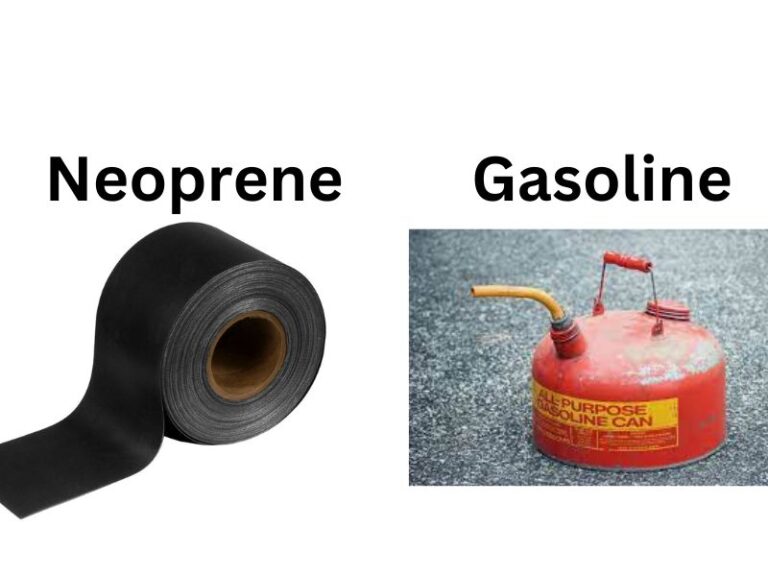Why is Neoprene So Expensive? The Actual Reason Behind
Neoprene is expensive due to its high production costs and the demand for its unique properties. Neoprene requires specialized machinery and raw materials, which drive up the production costs.
Additionally, the demand for neoprene in industries like diving, surfing, and medical applications adds to its price. Neoprene, a versatile synthetic rubber, has gained popularity in various industries due to its exceptional properties. It is renowned for its resistance to heat, chemicals, weathering, and aging, making it suitable for diverse applications such as wetsuits, electrical insulation, automobile parts, and more.
However, the soaring cost of neoprene has left many wondering why it carries such a hefty price tag. We will delve into the factors that contribute to the expensive nature of neoprene. By understanding these reasons, we can gain insight into the economic dynamics of the neoprene market and the challenges faced by manufacturers and consumers alike.
Unique Manufacturing Process
Neoprene is known for being an expensive material, and understanding the reasons behind its high cost requires knowledge of its unique manufacturing process. One of the key factors contributing to the expense is the complex production method involved in creating neoprene. The process includes the use of specialty materials and chemicals, which are costly to source and handle. These materials and chemicals undergo a series of intricate steps to transform into the final neoprene product, requiring a high level of expertise and a skilled labor force.
Quality control also plays a crucial role in the production of neoprene, further adding to its price. The rigorous testing and inspection procedures carried out during manufacturing ensure that the final product meets specific quality standards. This attention to detail and commitment to producing a high-quality material command a higher price in the market.
Performance Attributes And Demand
Neoprene is known for its superior durability, which contributes to its high price tag. This synthetic rubber material is resistant to wear and tear, making it ideal for applications that require long-lasting performance. Neoprene’s ability to withstand exposure to chemicals, oils, and extreme temperatures further adds to its value.
Furthermore, neoprene’s versatility across industries drives up its demand and subsequently its cost. From wetsuits and sports equipment to automotive parts and electrical insulation, its wide range of uses makes it a sought-after material.
The climbing demands in various markets also influence neoprene’s expense. As industries increasingly recognize its benefits, the demand for neoprene has surged, leading to higher prices. Additionally, factors such as production costs, availability of raw materials, and market competition can further impact the cost of neoprene.
Market Dynamics And Costs
Neoprene is known for its versatility and durability, making it a popular choice in various industries. However, its high price tag often leaves consumers wondering why it is so expensive. The cost of neoprene is influenced by several market dynamics and factors.
One key reason for the high price of neoprene is the limited number of producers. Only a few companies worldwide have the capability to manufacture neoprene, leading to a lack of competition. This scarcity allows producers to set higher prices.
Additionally, neoprene is made from petroleum-based raw materials, which are subject to price fluctuations and scarcity. As a result, any changes in the availability or cost of these raw materials affect the overall pricing of neoprene.
Moreover, strict environmental regulations have also impacted the neoprene industry. These regulations impose additional costs on producers, including investments in cleaner production technologies and compliance with environmental standards. These expenses ultimately get passed on to the consumer.
In conclusion, the high cost of neoprene can be attributed to limited production, raw material scarcity, and environmental regulations. These factors collectively contribute to the increased pricing of neoprene products.
Comparison With Alternatives
Neoprene, a synthetic rubber material, is often perceived as being expensive compared to its alternatives. One of the reasons for this is its unique properties that make it suitable for various applications. When comparing neoprene with other synthetic rubbers, it becomes apparent that neoprene offers several advantages.
Firstly, neoprene, with its excellent resistance to water, weather, and chemicals, provides enhanced durability and longevity. This makes it a preferred choice for diverse industries such as automotive, construction, and sports. Moreover, neoprene also exhibits exceptional flexibility, insulation, and cushioning properties, further adding to its value.
However, consumers need to consider the cost-benefit analysis before making a purchase decision. While neoprene may be more expensive initially, its long-term benefits and performance outweigh the price difference. It offers a reliable and high-quality solution, ensuring that consumers get their money’s worth.
In conclusion, neoprene’s higher price tag can be justified by its superior performance and durability when compared to other synthetic rubbers. Therefore, it is crucial for consumers to weigh the trade-off between price and performance when considering neoprene as a material choice.
R&D and Innovation Expenses
Neoprene, a synthetic rubber widely used for various applications, commands a higher price due to several factors, including significant research and development (R&D) expenses. Manufacturers continually invest in continuous research to enhance the properties of neoprene and improve its performance characteristics. This ongoing pursuit of innovation incurs substantial costs, which are inevitably passed on to consumers.
Moreover, the development of neoprene blends and composites also contributes to its higher price. By combining neoprene with other materials or modifying its chemical composition, manufacturers can create specialized variants of neoprene with enhanced properties, such as improved tensile strength or increased flexibility. However, developing and testing these blends require additional resources and expertise.
| Factors Affecting Neoprene’s Cost |
|---|
| 1. R&D Expenses |
| 2. Development of Neoprene Blends and Composites |
| 3. Patents and Technology Licensing Costs |
Another cost consideration is the investment required to protect intellectual property rights associated with neoprene-related innovations. Patents and technology licensing can be expensive, especially if a manufacturer aims to protect their proprietary technology or enter into partnerships with other companies for access to specific know-how.
Ultimately, the combination of ongoing research, development of specialized variants, and intellectual property protection all contribute to the higher price of neoprene products.
Supply Chain And Distribution Channels
Neoprene is considered to be an expensive material due to various factors within the supply chain and distribution channels. One key factor is the global logistics and transportation costs involved in sourcing and shipping neoprene. These costs can be influenced by geopolitical factors such as trade regulations, tariffs, and political instability in certain regions.
In addition to transportation costs, distribution markups and retailer pricing also contribute to the high price of neoprene. As the material goes through different stages of the supply chain, each entity adds their own markups to cover their costs and profit margin. These markups are eventually reflected in the final retail price of neoprene products.
Overall, the complex nature of the supply chain, combined with global logistics and distribution factors, leads to the expensive nature of neoprene. Understanding these factors can help us appreciate the value and quality that neoprene offers in various industries, despite its higher price point.
Beyond The Price Tag
Neoprene is often expensive due to its high production costs, specialized manufacturing techniques, and durability. Its unique properties make it a popular choice for wetsuits, diving gear, and other applications. Understanding the reasons behind neoprene’s price tag can help consumers appreciate its value.
The longevity of neoprene products: One of the key factors contributing to the higher price tag of neoprene products is their longevity. Neoprene is known for its durability and ability to withstand wear and tear. Unlike many other materials, neoprene products often last for years, if not decades, with proper care. This longevity translates into a lower cost per use over the lifespan of the product. So, while the initial investment may seem higher compared to other materials, the value for money is evident in the long run.
Investing in sustainability and quality: Another reason for the higher cost of neoprene products is the focus on sustainability and quality. Neoprene is often manufactured using eco-friendly processes and materials, ensuring minimal impact on the environment. Moreover, neoprene products are built to meet strict quality standards, delivering superior performance and functionality. By investing in neoprene products, consumers are not only getting a durable product but also supporting sustainable practices and enjoying high-quality performance. Overall, the higher price of neoprene products is justified by their longevity, sustainability, and quality.
Frequently Asked Questions On Why Is Neoprene So Expensive?
Why Is Neoprene So Expensive?
Neoprene is expensive due to its unique properties and the production process. It is a durable and versatile material that provides great insulation, flexibility, and resistance to chemicals. The manufacturing process involves blending different chemicals and requires precision and expertise.
Additionally, the demand for neoprene in industries like wetsuits, medical equipment, and automobile parts also drives up its price.
Conclusion
To sum up, the high price of neoprene can be attributed to several factors. Its unique properties, such as resistance to chemicals and extreme temperatures, make it a popular choice in various industries. The complex manufacturing process involving specialized machinery and materials further adds to the cost.
Additionally, the limited availability of neoprene and the demand from industries like fashion and sports contribute to its expensive nature. Despite its price, neoprene continues to be a valuable and versatile material with numerous applications.
- Can I Get in a Taxi Without a Car Seat? - January 26, 2025
- Can I Get Chlamydia From a Toilet Seat? - January 26, 2025
- Can I Get an Uber With a Car Seat? - January 26, 2025





